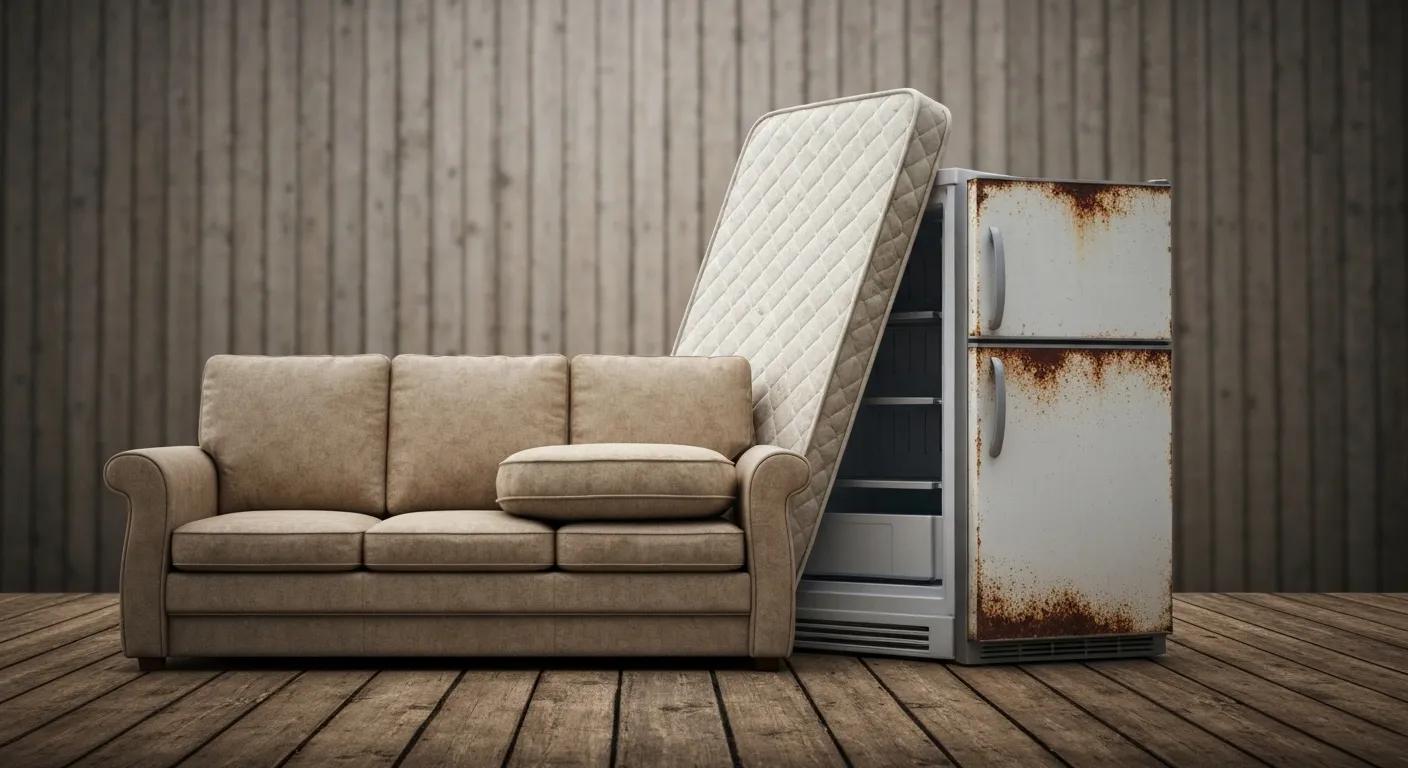Understanding Junk Removal Pricing Variations
Understanding Junk Removal Pricing Variations: A Clear Breakdown for Homeowners
Ever wonder why junk removal costs can seem all over the map? It’s not just you. Homeowners often face a wide range of fees when hiring a junk removal service, and it all boils down to factors like volume, type of junk, and site conditions. By getting a handle on these pricing elements, you can better predict costs, streamline quotes, and book with confidence. This guide dives into four key areas: the main cost drivers behind service rates, the most common pricing models, typical removal fees for everyday items, and actionable steps to secure accurate estimates and cut costs. Plus, we’ll show you how CNC Junk Removal’s commitment to transparent pricing and responsible disposal builds trust and efficiency.
What Are the Main Factors Affecting Junk Removal Pricing?
Junk removal pricing hinges on core factors that shape labor, disposal, and logistical expenses. Knowing these drivers helps you forecast costs and compare service options effectively.
Factors Affecting Junk Removal Pricing
Several factors influence junk removal pricing, including the volume of junk, the type of junk, and the location and accessibility of the site. Volume-based pricing charges homeowners based on the space their junk takes up in a removal vehicle, and different junk categories come with varying disposal and handling requirements that directly affect fees.
National Waste & Recycling Association, "Junk Removal Pricing Guide" (2023)
This research backs up our discussion on the main factors that influence junk removal pricing.
How Does the Volume of Junk Influence Cost?
Volume-based pricing charges homeowners based on the space their junk occupies in a removal vehicle. Companies measure load size in fractions of a truck or cubic yards, where larger volumes leverage economies of scale to lower the cost per unit.
Smaller loads cost more per cubic yard, while full truckloads improve efficiency and reduce unit pricing for homeowners who consolidate junk in advance.
What Role Does the Type of Junk Play in Pricing?
Different junk categories come with varying disposal and handling requirements that directly affect fees.
Appliances require certified recycling, which adds disposal costs for materials like refrigerants.
Furniture often involves bulky-lift labor and landfill fees for upholstery.
Construction debris may carry debris-site tipping fees per ton.
Hazardous materials need special containment and disposal permits.
Item-specific handling and recycling requirements ensure that cost reflects the complexity of removing each junk category, guiding homeowners to segregate materials before booking.
How Do Location and Accessibility Impact Junk Removal Prices?
Distance and site conditions shape service rates by influencing travel time and labor effort. Remote areas add mileage fees and fuel surcharges, while narrow driveways or multi-story pickups demand extra crew time.
Urban locations with restricted parking can increase labor intensity.
Stairs, elevators, or long carries require additional crew members.
Limited access points extend job duration and equipment use.
Evaluating site accessibility before scheduling helps predict any access-related fees that may apply to your removal project.
Why Are Labor and Disposal Fees Important in Pricing?
Labor and disposal fees make up the bulk of a junk removal cost structure. Labor covers crew hours for hauling, loading, and cleanup, while disposal fees pass on landfill or recycling center charges. Transparent pricing separates these components to show homeowners exactly what they pay for and why.
Which Pricing Models Do Junk Removal Companies Use?
What Is Volume-Based Pricing and How Does It Work?
Volume-based pricing bills based on the space your junk fills. Crews estimate or measure truckload fractions, then assign a rate per load tier. This model supports transparent billing by tying cost directly to junk quantity, allowing homeowners to forecast expenses by visually assessing their load size.
How Does Flat Rate Pricing Compare to Other Models?
Flat rate pricing offers a single, upfront fee regardless of time or volume within an agreed-upon scope. Homeowners benefit from predictable budgeting, while providers mitigate risk by defining load limits and item types. Compared to volume-based structures, flat rates simplify invoicing but may require detailed job scoping.
When Is Per-Item or Hourly Rate Pricing Used?
Per-item pricing assigns fixed fees to individual pieces—ideal for distinct, easily measured junk like mattresses or televisions. Hourly rate pricing charges by labor time and crew size, suiting scenarios with unpredictable quantities or intensive sorting work. These flexible models accommodate unique jobs that defy standard load-based tiers.
What Are the Average Costs for Removing Common Junk Items?

Average Costs for Removing Common Junk Items
Average removal costs vary by item weight, size, and handling requirements. For example, refrigerator disposal averages $100–$200 due to refrigerant handling, while washers and dryers cost $75–$150 each. Separating metal and non-metal components boosts recycling value and can slightly offset fees.
U.S. Environmental Protection Agency, "Managing and Recycling Wastes" (2024)
This citation provides additional information on the costs associated with removing common junk items, as discussed in the article.
How Much Does Furniture Removal Typically Cost?
Furniture removal ranges from $50 for a single chair to $150 for large sofas, with additional labor fees for dismantling heavier pieces. Bulk discounts apply when multiple items fill a single truckload.
What Are the Typical Appliance Removal Prices?
Refrigerator disposal averages $100–$200 due to refrigerant handling, while washers and dryers cost $75–$150 each. Separating metal and non-metal components boosts recycling value and can slightly offset fees.
How Much Does Hot Tub and Yard Waste Removal Cost?
Hot tub removal often runs $250–$500 because of its size and water-draining requirements. Yard waste disposal, priced by volume, usually falls between $30 and $50 per cubic yard at regional composting facilities.
What Are the Costs for Electronics and Construction Debris Removal?
Electronics disposal fees range from $60 to $120 per load, driven by e-waste regulations. Construction debris attracts tipping fees of $80–$120 per ton, with volume-to-weight conversions affecting final charges.
How Can Homeowners Get an Accurate Junk Removal Estimate?
What Is the Difference Between Online and On-Site Estimates?
Online estimates offer fast, volume-based ballpark figures using homeowner-supplied photos or descriptions. On-site estimates deliver pinpoint accuracy by evaluating actual junk size, type, and access conditions. Choosing an on-site inspection minimizes surprise fees and ensures the quoted price reflects real-world factors.
What Information Should You Prepare for an Estimate?
Homeowners improve quote accuracy by consolidating key details before contacting a provider:
Item List: Count and categorize appliances, furniture, and debris.
Load Size Estimate: Provide photos or rough measurements.
Access Details: Note stairs, narrow paths, or parking constraints.
Desired Timeline: Specify preferred removal date and flexibility.
Supplying complete information expedites quoting and fosters transparent pricing from CNC Junk Removal.
What Tips Help Save Money on Junk Removal Services?
How Does Decluttering Before Removal Reduce Costs?
Removing unnecessary items yourself shrinks the volume of junk to be hauled, lowering space-based charges. Segmenting donations or recyclables further decreases load size and disposal fees, driving down your final bill.
Can Donating or Recycling Items Lower Your Junk Removal Price?
Donatable items divert from landfill, cutting disposal expenses. By separating recyclable materials—such as metals, electronics, and textiles—homeowners leverage lower recycling fees and may even earn rebates on select materials.
Why Should You Compare Multiple Junk Removal Quotes?
Obtaining several estimates creates competitive pressure and reveals pricing model differences. Comparing quotes highlights providers that prioritize transparent pricing, responsible disposal, and swift service—key factors in selecting the best value option.
Junk removal pricing varies by volume, junk type, location, labor, and disposal methods, but homeowners can navigate costs by understanding core factors and models. Reviewing average item fees and preparing detailed information ensures accurate estimates. Implementing decluttering and recycling strategies further trims expenses while promoting eco-friendly practices. To secure clear, upfront pricing and professional service, request a free estimate from CNC Junk Removal today.

